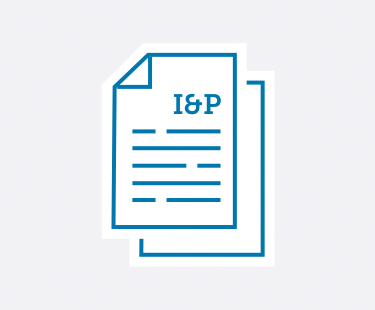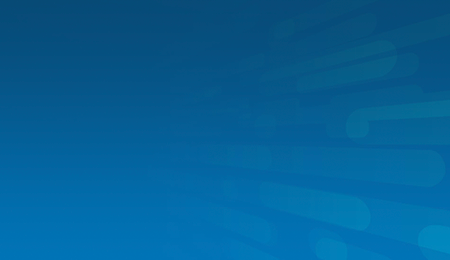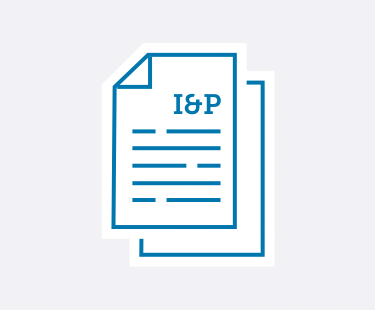

Learn practical strategies to handle emerging trends and leadership challenges in private schools.
No matter if you’re a School Head, Admission Director, Development Director, Board member, or any other private school administrator—Ideas & Perspectives®, ISM’s premier private school publication, has strategic solutions for the pervasive problems you face.
- Tuition not keeping pace with your expenses? In I&P, explore how to use strategic financial planning to create your budget and appropriately adjust your tuition.
- Enrollment dropping off? Discover how to implement the right admission and enrollment management strategies that engage your community—and fill your classrooms.
- Trouble retaining teachers? Learn how you can best support your teachers using ISM’s Comprehensive Faculty Development framework. Your faculty members will become more enthusiastic about their roles—which ultimately improves student outcomes.
- Fundraising campaigns not as successful as you’d hoped? Implement ISM’s practical advice and guidance to build a thriving annual fund, construct an effective capital campaign, and secure major donors—no matter your community size or location.
- Not sure how to provide professional development—for you and your staff? Learn ways to develop and fund a successful professional development strategy. You can improve teacher-centered satisfaction and growth, which in turn strengthens student-centered learning.
- Problematic schedule? You can master the challenges of scheduling with the help of ISM’s practical advice, based on our experience with hundreds of schools and our time-tested theories.
- And so much more.
I&P has shared targeted research, up-to-date insight, and sound theory with school leaders since 1975. More than 8,500 private school decision-makers find the answers to their schools’ administrative and governance matters in our advisory letter. We give you the strategic answers you need.
As an ISM Silver or Gold member, you not only receive issues online and in print 10 times a year, but you have access to 900+ articles in our web archive. Need help? It’s at your fingertips! Learn more and sign up for ISM's membership here.
Search
See the articles from our latest issue of Ideas & Perspectives.
The Committee on Trustees and the Leadership Funnel
Volume 40 No. 9 // July 20, 2015
Strategic Boards are critical to the success of today’s private-independent schools in a highly competitive educational environment and a time of constant adaptation. They have demonstrated their capacity to lift School Heads and their schools to great heights. They have also demonstrated that they can be highly destructive, undermining the School Head, interfering in the operations of the school, and significantly diminishing a school’s viability. As Board President or School Head, you have a vested interest in ensuring that the health of the Board is optimal from year to year.
1. Already a member? Click here to login.
2. Not a member? Click here to become a member.
3. Not sure? We'll help you figure it out.
Marketing Communications and the Parent
Volume 40 No. 9 // July 20, 2015
As Marketing Director,1 you must work closely with the School Head—the Head’s direction concerning marketing communications is essential in understanding how to leverage the school’s competitive position. In this article, we consider the relationship of marketing communications to the parent. In a subsequent article, we will consider the parallel relationship to the student.
1. Already a member? Click here to login.
2. Not a member? Click here to become a member.
3. Not sure? We'll help you figure it out.
Preparing Your School’s Families for New Teachers
Volume 40 No. 8 // June 22, 2015
When teachers leave at the end of your school year and new faculty members are hired, parents often become concerned. Their primary concern is the loss of known and valued educators and role models. Many parents were familiar and comfortable with the departing teachers. Until new teachers are hired, parents and students experience a real void. As School Head or Division Head, inform parents that turnover in the faculty is not only expected, but often healthy for the school. Parents should not be unduly concerned. Educate your parents so they will understand what steps your school takes in hiring new teachers and how this process can benefit their children.
1. Already a member? Click here to login.
2. Not a member? Click here to become a member.
3. Not sure? We'll help you figure it out.
The Strategic Financial Plan: A Checklist for Trustees
Volume 40 No. 8 // June 22, 2015
Your strategic financial plan (SFP) grounds your strategic plan by calculating a realistic cost for each planning objective and accommodating the operational aspects of that cost within a conservative six-year budget format. Your SFP should be developed at the same time as your strategic plan. These are two sides of a single coin. Unless every proposed item in your new plan is tested for its cost-effectiveness (by converting its cost into its tuition impact), your plan is no more than a nicely packaged wish list.
1. Already a member? Click here to login.
2. Not a member? Click here to become a member.
3. Not sure? We'll help you figure it out.
Your Strategic Financial Plan: Hard Income P&L
Volume 40 No. 8 // June 22, 2015
As you, the School Head, move year by year through your strategic plan and its accompanying strategic financial plan, you may find your Board of Trustees focusing annually on the enrollment line (line 1A in the “Sample Strategic Financial Plan” on page 31 of this issue), the net tuition revenue line (line 2), the expense line (line 5), or other meaningful lines within the spreadsheet’s 13-line basic format. We suggest you be most proactive, however, in teaching and re-teaching the overriding importance of line 6 (hard income P&L), the line that tells the most comprehensive and accurate story regarding your success in moving the school forward in ways fully consonant with your six-year planning document.
1. Already a member? Click here to login.
2. Not a member? Click here to become a member.
3. Not sure? We'll help you figure it out.
The Board and Employment Practices Liability Insurance
Volume 40 No. 7 // June 2, 2015
While the School Head and Management Team ensure that policies and procedures are in place and implemented, the Board must ensure that your school insurance includes employment practices liability (EPL), to cover any legal costs it may incur if a case is brought against it.
1. Already a member? Click here to login.
2. Not a member? Click here to become a member.
3. Not sure? We'll help you figure it out.
The Dynamics of Flattened Tuition Gradients: Endowments and Other Revenue Won’t Help
Volume 40 No. 7 // June 2, 2015
ISM recently published: “The notion that tuition gradients must never again exceed inflationary projections poses, in itself, one of the greatest threats to private-independent school financial and organizational health.” Let’s unpack this comment in more detail. Some schools, fearing “unaffordability,” have begun to take a price-averse approach to tuition (i.e., artificially setting tuition flat or below inflation). Schools turn to the teachers to “pay” for this approach and maintain program. Schools freeze salaries or flatten their increases, reduce benefits, cut professional development budgets, and increase teacher workloads/class sizes. Schools know these approaches are only impactful in the short run—they are left to consider how their annual fund, endowments, and other revenue sources can help them flatten tuition. Here we demonstrate, through a simple equation, how these tactics to flatten tuition gradients are unlikely to be sustainable.
1. Already a member? Click here to login.
2. Not a member? Click here to become a member.
3. Not sure? We'll help you figure it out.
Summer Program: The Third Semester—Three Administrative Considerations
Volume 40 No. 7 // June 2, 2015
In this series on summer program, we have provided examples and insights into Semester 3 (S3) as an inevitable expansion of a school’s program to year-round. In this final article, we look at some administrative considerations for S3 leadership, facilities, and upper school curriculum.
1. Already a member? Click here to login.
2. Not a member? Click here to become a member.
3. Not sure? We'll help you figure it out.
Craft a Powerful Advancement Message
Volume 40 No. 6 // May 11, 2015
All of your school’s advancement efforts (admission, marketing communication, and development) should share a common focus on your children and your mission. Too often, messages in these areas lack incisiveness and unity. A strong message—one that invites people to enroll and to give—communicates a educational experience through the lens of the student. To understand what is different about marketing schools, consider the following student-centered advancement approach.
1. Already a member? Click here to login.
2. Not a member? Click here to become a member.
3. Not sure? We'll help you figure it out.
Advancement: From Values to Results
Volume 40 No. 6 // May 11, 2015
Advancement integrates your admission, development, and marketing communications programs at the service of your school’s mission. It is important to collaborate among these three areas. When you do, you impact student recruitment and re-recruitment, aid your school in its strategic direction, and encourage philanthropic giving. ISM now offers a way to measure the effectiveness of your advancement efforts. While the Comprehensive Advancement Model illustrates the key relationships that exist among these areas of advancement, metrics are appropriately seen as important in measuring results. To develop these metrics, we offer ISM’s Advancement Core Values and Standards, including an assessment tool to bridge the gap between values and results.1
1. Already a member? Click here to login.
2. Not a member? Click here to become a member.
3. Not sure? We'll help you figure it out.


